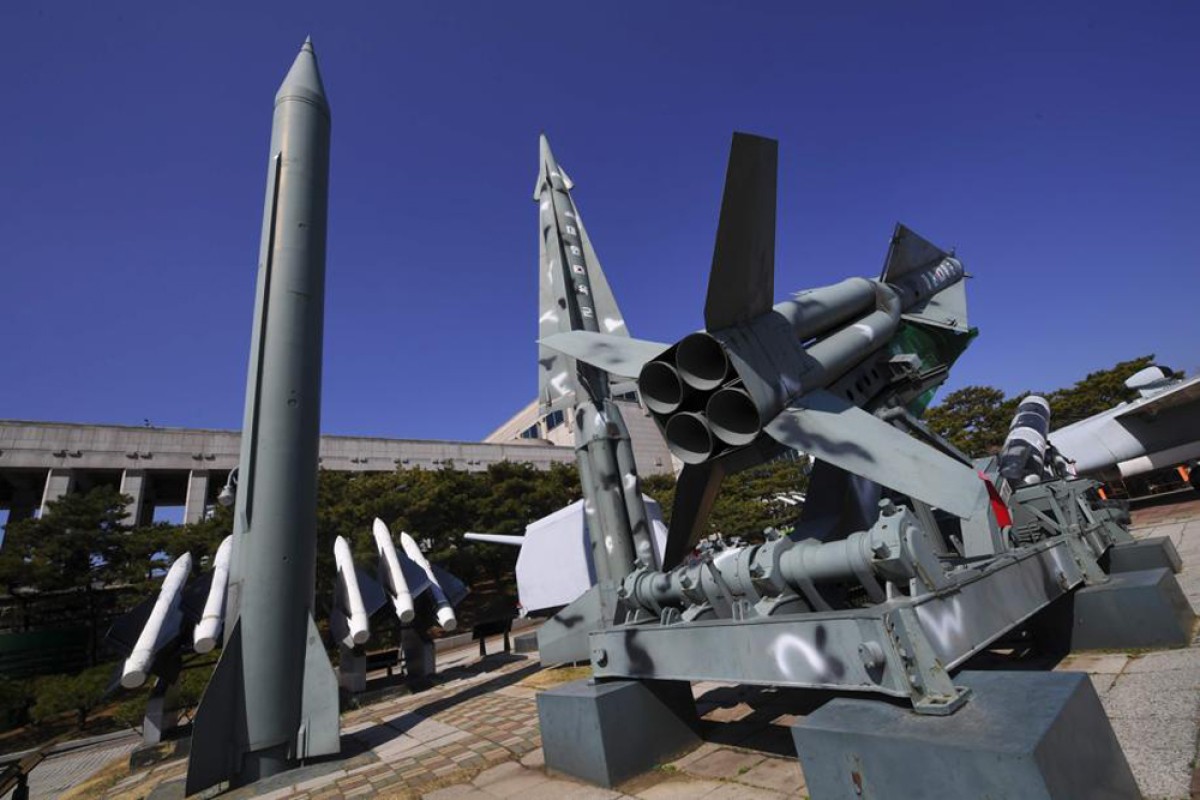
Missile test launches seem to be a response to huge military drills being held on the Korean peninsula by the United States and South Korea
 Replicas of North and South Korean missiles at the Korean War Memorial in Seoul.
Replicas of North and South Korean missiles at the Korean War Memorial in Seoul. North Korea on Monday fired four banned ballistic missiles that flew about 1,000km, with three of them landing in waters that Japan claims as its exclusive economic zone. It seemed to be a reaction to huge military drills by the United States and South Korea.
It was not clear which exact type of missile was fired, but the tests will be seen as a provocation by the US. The New York Times reported at the weekend that the US still can’t prevent Pyongyang’s actions, despite efforts to improve its cyber and electronic strikes against the North’s missile programme.
Pyongyang has test-launched a series of missiles in recent months, including a new intermediate-range missile in February. It also held two nuclear tests last year. The ramped-up tests come as leader Kim Jong-un pushes for a nuclear and missile programme that can deter what he calls US and South Korean hostility toward the North.
There have been widespread worries that the North will hold an ICBM test that, when perfected, could possibly reach the American mainland. The US would consider this a major threat.
US national security adviser H.R. McMaster and senior South Korean official Kim Kwan-jin talked by phone after the missile firings. The two condemned the launches.
Japanese officials said three missiles landed in the 200-nautical-mile offshore area where Tokyo has rights for exploiting resources. It’s the third time that North Korean missiles have fallen in Japan’s exclusive economic zone, beginning last August. Japanese leaders see the launches into nearby waters as a threat.
South Korea’s military chiefs said that Monday’s launches were made from the Tongchang-ri area in North Pyongan province. The area is the home of the North’s Sohae rocket launch site where it has conducted prohibited long-range rocket launches in recent years.
US State Department spokesman Mark Toner said, “We remain prepared – and will continue to take steps to increase our readiness – to defend ourselves and our allies from attack.”
Seoul and Washington say their military drills on the Korean peninsula are only defensive. The peninsula remains in a state of war because the 1950-53 Korean War ended with an armistice and not a peace treaty.
The North hates the military drills, which force its impoverished army to respond with expensive drills of its own. A spokesman for the North’s army said last week that Pyongyang’s reaction to the southern drills would be the toughest ever, but he didn’t give details.
The United States has 28,500 troops stationed in South Korea, and 50,000 in Japan, as a deterrent against any aggression from the North.